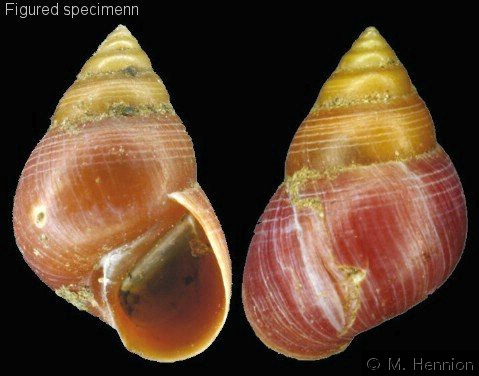| Citation |
|
Description |
Geographic Range [top]
Range Description: This species is known from southern Thailand, Java in Indonesia, Sarawak in Malaysia, and the Philippines (Abbot 1958, Brandt 1974). In the Philippines, specimens have been recorded from Luzon, Mindanao, Samar, Masbate, Mindoro, Palawan, Negros and Leyte (Abbot 1958). There are also records from Taiwan, although these are yet to be confirmed.
Abbot (1958) considered it likely that A. ignota from the Andaman Islands was a synonym of this species. Another potential synonym, A. australis, would extend the distribution to Tasmania (Brandt 1974).
Countries occurrence:
Native:
Indonesia (Jawa); Malaysia (Sarawak); Philippines; Thailand
Additional data:
Range Map: Click here to open the map viewer and explore range.
Population [top]
Population: This is a common species in the Philippines (Abbot 1958).
Current Population Trend: Unknown
Additional data:
? Population severely fragmented: No
Habitat and Ecology [top]
Habitat and Ecology: Members of this genus often inhabit brackish waters, and seem to require a degree of salinity. They are generally restricted to lowland coastal regions, often within reach of marine waters, and many are amphibious in nature (Abbot 1958).
This species is found in "low, warm, moist coastal regions", including mud flats, brackish creeks, mangroves and estuaries, preferring mud, stones or rotten logs (Abbot 1958, Ashton et al. 2003). It is also semi-terrestrial and can withstand direct sunlight; according to Abbot (1958): "[this species] is probably an example of an estuarine species on its way to becoming terrestrial". It feeds on decaying organic matter (Brandt 1974).
Systems: Freshwater
Threats [top]
Major Threat(s): There are no known major threats affecting this species.
Conservation Actions [top]
Conservation Actions: There are no species-specific conservation measures in place for this species.
Citation: Rintelen, T. & Köhler, F. 2011. Assiminea philippinica. The IUCN Red List of Threatened Species 2011: e.T189066A8688767. http://dx.doi.org/10.2305/IUCN.UK.2011-2.RLTS.T189066A8688767.en. Downloaded on 10 December 2018.
Disclaimer: To make use of this information, please check the .
Feedback: If you see any errors or have any questions or suggestions on what is shown on this page, please provide us with feedback so that we can correct or extend the information provided
|

